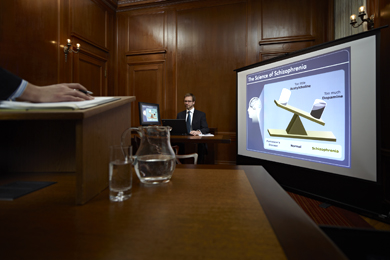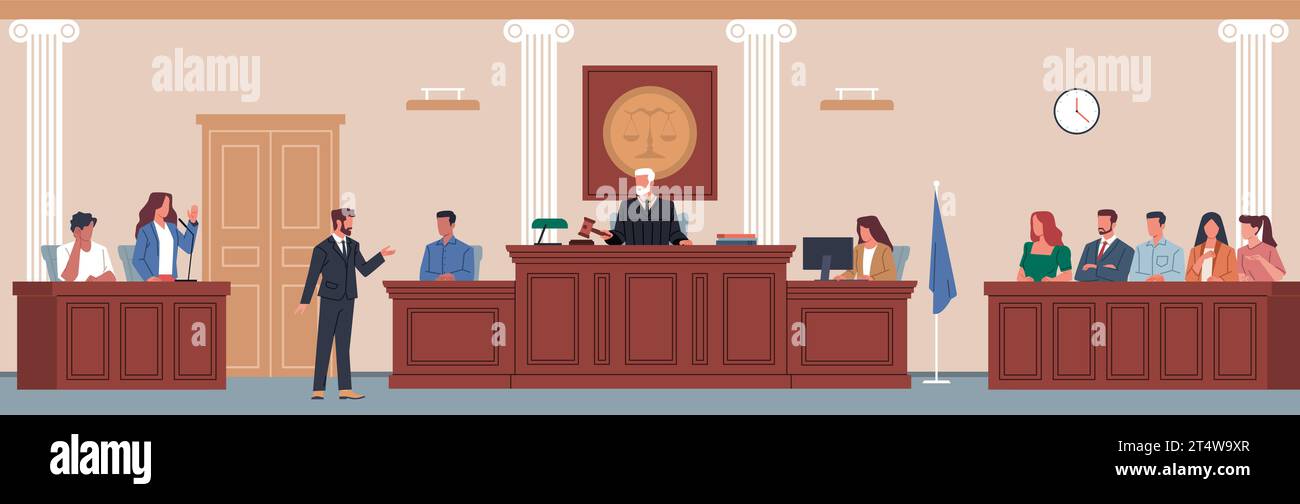Trial Presentation Comprehensive Tools for Persuasive Legal Advocacy
Trial Presentation Comprehensive Tools for Persuasive Legal Advocacy
Blog Article
Astound the Jury: Vital Aspects of a Powerful Trial Discussion
Crucial components such as recognizing the audience, crafting a compelling story, and understanding spoken and non-verbal communication are critical components of a reliable discussion. As these elements link, they form a cohesive approach that not only educates yet likewise involves jurors on several levels.

Recognizing Your Target Market
Understanding your audience is a crucial element of efficient trial presentation. A successful discussion rests on the capability to understand the demographics, values, and tendencies of jurors. This comprehension informs how debates are framed, evidence exists, and sob stories are crafted, making sure that the message resonates with the jurors on a personal degree.
Research study shows that jurors originated from diverse backgrounds and might have differing degrees of understanding relating to legal procedures (trial presentation). Thus, it is vital to avoid lawful jargon that could estrange or perplex them. Rather, employing clear, relatable language promotes engagement and understanding. In addition, understanding the jurors' possible biases and life experiences allows the test presenter to prepare for objections and address issues proactively.
Reliable trial presentation additionally involves observing jurors' reactions during the procedures. Being in harmony with non-verbal hints can offer insight into their involvement and receptivity, enabling for real-time modifications in technique. Inevitably, an extensive understanding of the target market not just improves interaction yet additionally develops rapport, enhancing the likelihood of a positive end result. Involving with jurors as individuals instead of a collective system is necessary in promoting a solid connection in the court.

Crafting a Compelling Story
Crafting an engaging narrative is important in guiding jurors via the intricacies of a situation. A well-structured narrative not just streamlines intricate legal concepts but additionally involves jurors on an emotional degree, making the information a lot more relatable and remarkable.
To attain this, lawyers need to begin by identifying the core message they want to share. This message should resonate with the jurors' values and experiences, fostering a connection that goes beyond mere realities. The story ought to unravel realistically, presenting events in a clear series to avoid confusion. This chronological strategy can assist jurors follow the development of events, stressing domino effect.
Incorporating human aspects-- such as personal tales or stories-- can even more enhance the story's effect. These elements stimulate compassion, enabling jurors to imagine the repercussions of the situation on realities. Additionally, employing a regular motif throughout the discussion strengthens the primary argument, making it much easier for jurors to preserve critical factors.
Ultimately, an engaging narrative changes a test discussion from a mere recounting of realities into an influential story that astounds the court, urging them to ponder with both factor and emotion.
Making Use Of Visual Help
Integrating aesthetic help into a test presentation can dramatically enhance jurors' comprehension and retention of information. Visual materials such as charts, representations, pictures, and video clips can transform complicated legal principles and proof right into easily digestible layouts. By engaging several detects, these aids allow jurors to visualize the situation's crucial elements, making it less complicated for them to adhere to along and comprehend detailed details.
Additionally, properly designed visual help can emphasize crucial points and highlight partnerships in between various pieces of evidence. Timelines can properly highlight the series of occasions, while annotated images can clarify particular information pertinent to the situation. This not only help in understanding yet additionally reinforces the story presented by the attorney.
Overly complex or cluttered visuals might bewilder jurors and take away from the message. Eventually, effective aesthetic communication can be a powerful device link in encouraging jurors and helping them get to educated final thoughts.
Understanding Verbal Communication
Reliable spoken communication is vital in a test presentation, as it functions as the main methods via which lawyers communicate their disagreements and link with jurors. Grasping this ability entails clearness, persuasion, and interaction. Lawyers should express their points clearly and briefly, avoiding lawful jargon that might perplex jurors. Simplicity in language promotes understanding and helps jurors realize complex issues offered throughout the trial.
Furthermore, tone and pacing considerably impact how messages are gotten. A positive tone communicates authority, while suitable pacing permits jurors to take in info without really feeling bewildered. Attorneys must also differ their vocal inflections to highlight vital points and maintain jurors' passion throughout the presentation.
In addition, the organization of spoken debates is necessary. Structuring the narrative logically and coherently aids jurors follow the lawyer's logic, making it simpler for them to preserve critical details. Using persuasive methods, such as narration, can also improve the psychological resonance of the arguments provided, thus developing a much more profound link with jurors.
Eventually, grasping spoken communication not only strengthens an attorney's instance but additionally promotes count on and connection with the court, dramatically boosting the chances of a beneficial verdict.

Engaging With Body Movement
Nonverbal interaction plays an important role in trial presentations, often sharing messages that words alone can not express. Body movement, encompassing gestures, position, faces, and eye call, substantially affects how jurors view the reliability and genuineness of the speaker. A certain position, with shoulders back and an open pose, can infuse trust fund, while closed-off body language may suggest defensiveness or unpredictability.

Facial expressions must reflect Continued the feelings connected with the case, enhancing the narrative existing. For circumstances, a sincere expression during an emotional moment can generate compassion and strengthen the psychological allure. Ultimately, understanding body movement is important for efficient test discussions, as it enhances verbal communication and establishes an engaging existence that reverberates with the important site jury.
Final Thought
In verdict, astounding the court demands a strategic technique that includes comprehending the target market, crafting an engaging narrative, using visual aids, mastering verbal communication, and engaging through body language. Each element plays an essential role in creating a powerful test discussion that resonates with jurors on both psychological and intellectual degrees (trial presentation). By incorporating these elements effectively, attorneys can considerably improve their ability to convince and affect court decision-making
Report this page